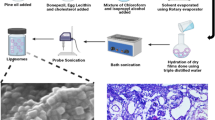Abstract.
Despite its extreme toxicity, botulinum neurotoxin is widely utilized in low doses as a treatment for several neurological disorders; higher doses cause the neuroparalytic syndrome botulism. The toxin blocks neurotransmitter release by preferentially attaching to pre-synaptic membrane receptors at neuromuscular junctions and subsequently delivering a Zn 2+-dependent protease component to presynaptic neuronal cytosol. These highly specialized enzymes exclusively hydrolyze peptide bonds within SNARE (soluble N-ethylmaleiamide sensitive factor attachment protein receptor) proteins. In this review we discuss the structural basis for botulinum toxin’s exquisite specificity for its neuronal cell-surface receptors and intracellular SNARE targets.
Similar content being viewed by others
Author information
Authors and Affiliations
Corresponding author
Additional information
Received 20 February 2008; received after revision 4 March 2008; accepted 6 March 2008
Rights and permissions
About this article
Cite this article
Brunger, A.T., Jin, R. & Breidenbach, M.A. Highly specific interactions between botulinum neurotoxins and synaptic vesicle proteins. Cell. Mol. Life Sci. 65, 2296–2306 (2008). https://doi.org/10.1007/s00018-008-8088-0
Published:
Issue Date:
DOI: https://doi.org/10.1007/s00018-008-8088-0




